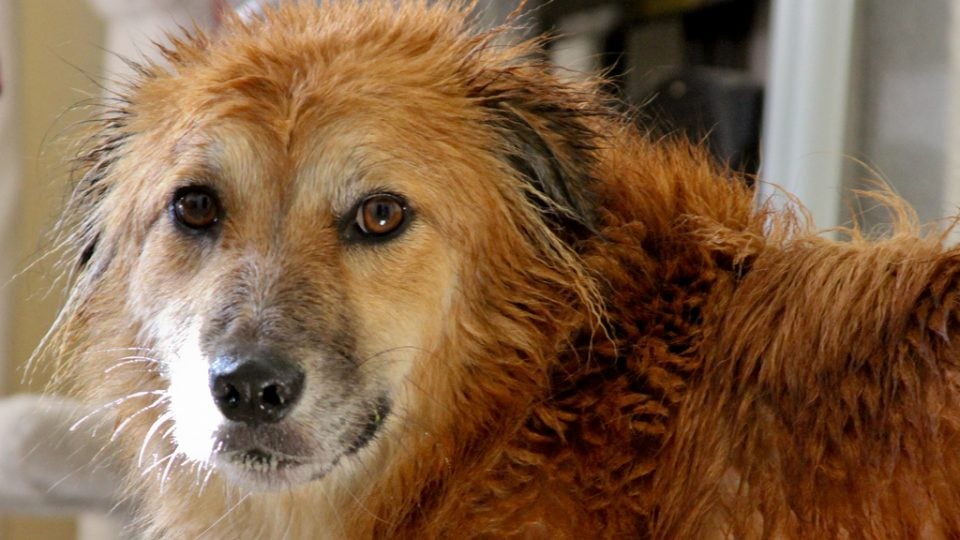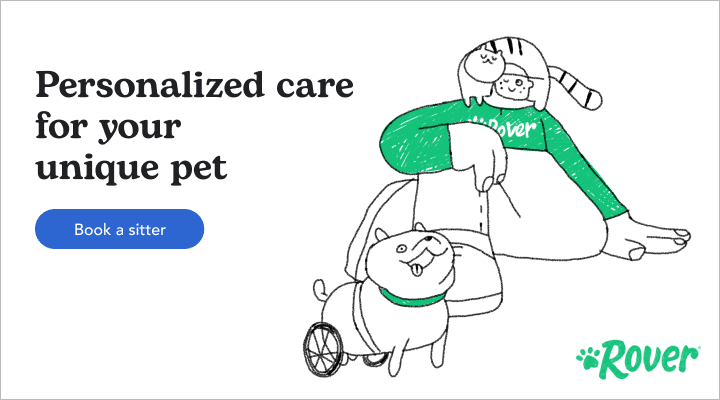Days became weeks and weeks became months, and now there’s no way around it: Fido is beginning to smell a little funky.
How often should you bathe your dog? That’s a question we tackle here. In a nutshell, it depends. The ASPCA says that you should bathe your buddy at least once every three months, but different strokes for different folks. Just for when the special time comes, here’s your how-to on getting your scruffy sidekick back in fluffy, fighting form.
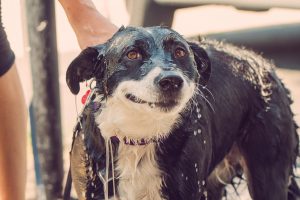
Via Flickr
Ease His Fears
Treats, a soothing voice, a reassuring “good boy”—these will all do wonders for your dog’s anxiety.
Starting with gentle brushing is a good way to prime him for the tub. You’ll want to make sure your dog is at least a little zen before cleaning time. Long walks are a great way to bring anxiety down a notch.
Anyway you can associate the bath tub with a positive experience (i.e.: play time, treats, etc.) will help you in the long run, as well starting your buddy young.
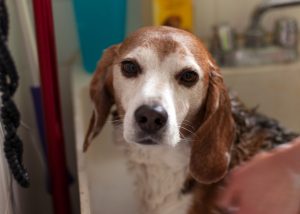
Via Flickr
Have Everything Ready
This will streamline the process. From shampoo to towels, have everything within arm’s reach so you can get ‘er done. Scrub a dub dub!
Here’s your checklist:
- Shampoo
- Treats
- Brush or comb
- Small receptacle for pouring water
- Lots of towels

Via Flickr
Hot Tips for the Nitty Gritty
Make sure the water is lukewarm and the pressure (if you’re using a hose or spray nozzle) isn’t too strong.
If you don’t have a nozzle, fill the tub just a few inches below your dog’s chest level to get started. Start small to acclimate your dog to the water.
You need to avoid your dog’s eyes and ears—one way to make things easier is to put a big cotton ball in each ear.
On shampoo, there are a myriad of options on the market to get your buddy squeaky clean. DogsNaturally has a list of things to avoid in shampoo, including synthetic color additives and added fragrance derived from chemicals. Pet Plus has a useful guide on making a selection here, but you can always ask your vet what shampoo might work best. From dry skin to tangly fur, there’s a shampoo for every scenario.
Expect to get a little wet at the end—it’s natural. Have your towels ready and pat your buddy dry, as rubbing will only tangle your dog up if he has long fur. On that note, if your pet sports a long mane, conditioner is something you might want to consider to keep those locks luscious.
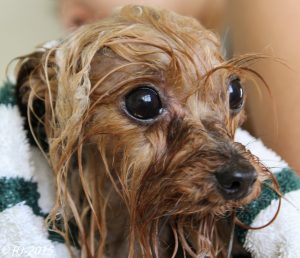
Via Flickr
Voila!
That wasn’t so bad, was it? We think some treats and extra fragrant cuddles are in order. Good job!
Top image via Flickr/Jen
